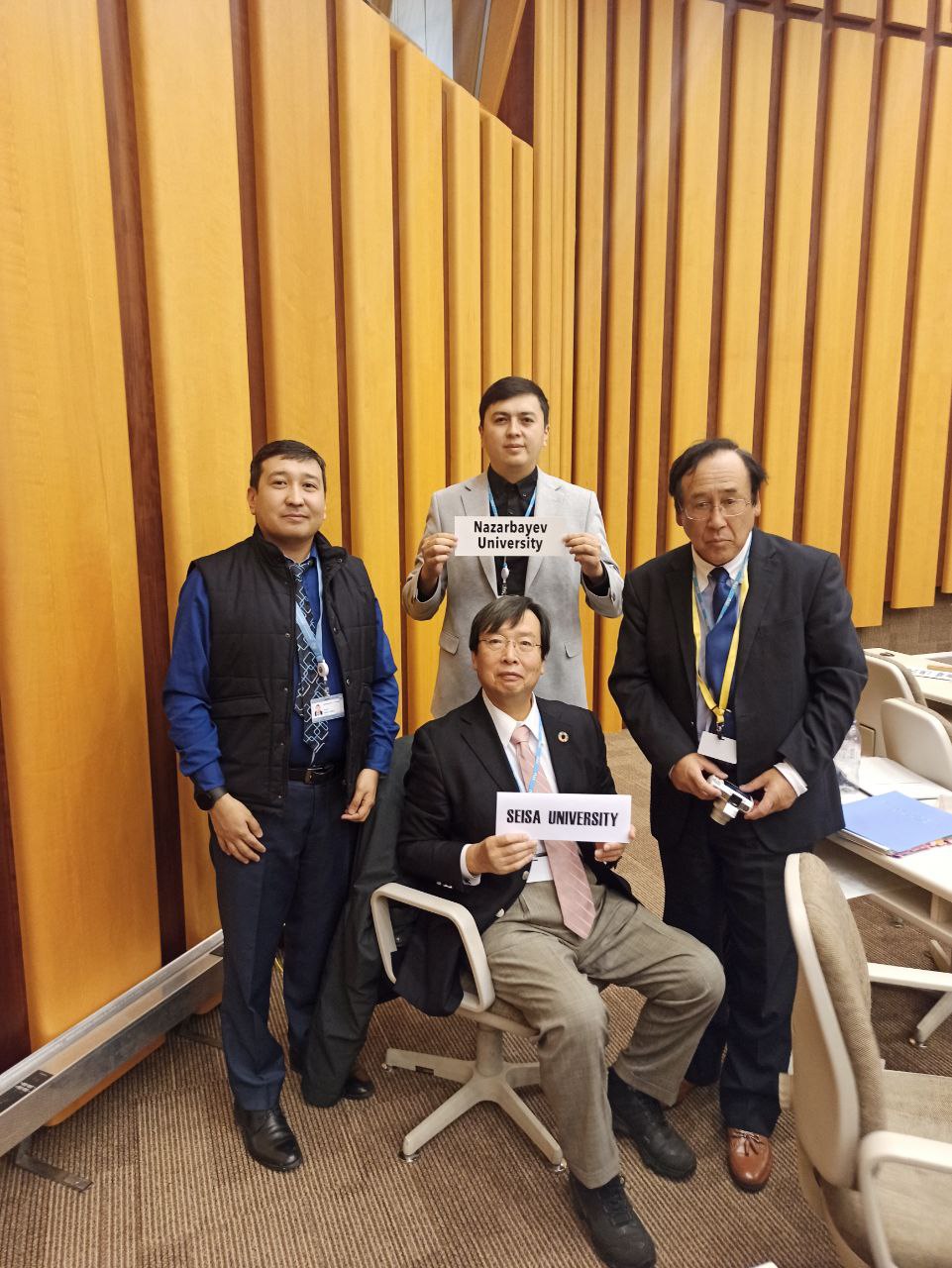In August 2019, the Secretary General of the International Telecommunication Union (ITU), Mr. Zhao Houlin, paid an official visit to Nazarbayev University (NU). During his visit, Mr. Zhao extended a formal invitation to NU to become a university member of the ITU and called on the researchers to participate in the annual summits and meetings under the aegis of the ITU. Founded in 1865, the ITU (www.itu.int) is the world’s oldest international organization and largest union in terms of membership. Working closely with governments, academia, as well as other stakeholders, the ITU is a specialized agency of the United Nations for the promotion and standardization of information and communication technologies (ICT).
Following Mr. Houlin’s visit, the NU leadership mandated the Institute of Smart Systems and Artificial Intelligence (ISSAI) to become a member of the ITU’s Academia on behalf of the University and to take an active role in the ITU’s initiatives in the field of artificial intelligence (AI). In 2019, ISSAI was granted ITU membership, becoming the first organization from Kazakhstan in the academic direction of the ITU.
Due to the COVID-19 restrictions, all ITU’s activities were held online in 2020-2021. Since 2022, some of the ITU meetings have been transferred to offline format.
There are three sectors in which all ITU activities take place—namely, ITU-R (radio communication), ITU-T (telecommunication standardization), and ITU-D (development). In addition, each sector has study groups, with each group having specific subject areas.
In October 2022, ISSAI, as the leading academic institution in the field of AI in Central Asia, was officially invited to contribute to the ITU-D sector. The ITU-D consists of two groups (Group 1 and 2). For each group, one-week meetings were held in late November (Group 1) and early December (Group 2). Assigned to Group 2, ISSAI had the honor of presentig its achievements in promoting the Kazakh language in the digital world.
During the week, ISSAI technical project coordinator Yerbol Absalyamov and senior data scientist Askat Kuzdeuov gave a presentation on the development of the Kazakh Speech Corpus and the challenges faced in the course and gave a detailed overview of the data collection and model development processes. Yerbol and Askat introduced the audience to ISSAI’s attainments in developing the Kazakh Text-to-Speech (KazakhTTS) dataset and the Kazakh Named Entity Recognition Dataset (KazNERD). They also spoke about ISSAI’s research work in multilingual speech recognition for Turkic languages and provided examples of intergovernmental cooperation with the Image and Speech Processing Laboratory in the Department of Computer Systems of Tashkent University of Information Technologies, which led to the creation of the Uzbek Speech Corpus (USC).
The presentation was unanimously well received, with the President of Study Group 2 noting a very high level of research in ISSAI. Both the President of Study Group 16 of the ITU-T sector and the Vice-Rapporteur/Coordinator of Study Group 1 and Vice-President of the ITU-T sector suggested that ISSAI’s contribution be included in their groups, as the achievements are not only a direct and high-quality result of multimedia coding, systems, and applications, but also enable inclusive communication, especially for persons with disabilities. The Intel representative said he was pleased to have ISSAI participate in the event and praised the informative nature of the presentation. At the end of the meeting, the President of Study Group 2 call on developing countries to collaborate with Kazakhstan, with ISSAI, as a center of AI expertise and know-how, definitely being the first point of contact.
Overall, ISSAI’s first participation in an official ITU event was successful and fruitful, and Seisa University, Japan, showed interest in collaborating with the Institute in detecting infected farm birds to prevent the spread of the disease.



